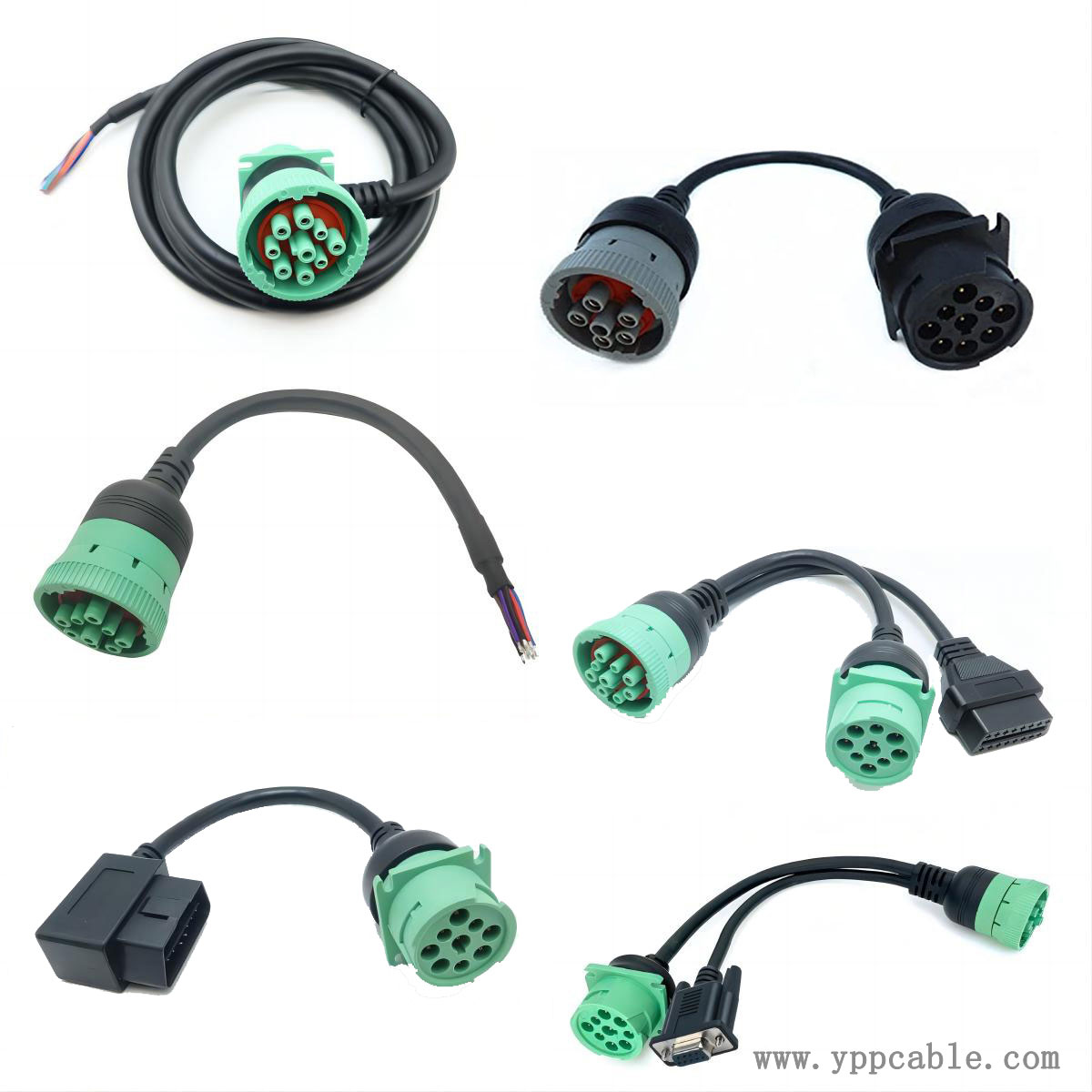What are the factors that affect the signal transmission of J1939 to J1708 cable?
The factors that affect the signal transmission of J1939 to J1708 cable mainly include the following aspects:
Characteristics of the cable itself
Impedance matching: J1939 and J1708 protocols have certain requirements for the characteristic impedance of cables. If the impedance of the cable does not match the impedance of the equipment, it will cause signal reflection, thereby reducing signal quality, resulting in problems such as signal distortion and increased bit error rate.
Transmission rate: The transmission rate of J1939 protocol is usually higher than that of J1708 protocol. When performing protocol conversion, the cable needs to be able to support the corresponding rate conversion, otherwise signal loss or errors may occur due to rate mismatch.
Attenuation characteristics: The degree of signal attenuation by cables is related to the length, material, and signal frequency of the cable. Generally speaking, the longer the cable and the higher the frequency, the more severe the signal attenuation. If the attenuation is too large, it will reduce the amplitude of the signal, making it difficult for the receiving end to accurately recognize the signal.

external disturbance
Electromagnetic interference: Electromagnetic interference sources in the surrounding environment, such as electric motors, generators, wireless transmission equipment, etc., can generate electromagnetic waves that may couple to cables, causing interference to signal transmission and resulting in noise, distortion, and other issues.
Radio frequency interference: In some environments where radio frequency signals exist, such as near wireless communication base stations and industrial radio frequency equipment, radio frequency signals may interfere with signal transmission in cables, affecting the stability and reliability of communication.
Connection and installation
Connection quality: If the connection head between the cable and the equipment has poor contact, looseness, or oxidation problems, it will increase the contact resistance, leading to unstable signal transmission and even signal interruption.
Installation method: The installation method of cables can also affect signal transmission. For example, if cables are laid in parallel with strong electrical lines, they may be affected by the magnetic field interference generated by the strong electrical lines; If the cable is subjected to excessive bending, stretching, or compression during the laying process, it may damage the internal structure of the cable and affect the signal transmission performance.
Temperature and Humidity
Temperature effect: Changes in temperature can affect the electrical performance of cables. For example, high temperatures can increase the resistance of cables and exacerbate signal attenuation; Low temperature may cause a decrease in the insulation performance of the cable, leading to signal leakage or short circuit.
Humidity impact: When the humidity is high, the insulation performance of the cable may decrease, making it prone to leakage and affecting the stability of signal transmission. At the same time, humidity may also cause condensation of moisture on the surface of the cable, leading to corrosion and further affecting signal transmission.
Contact: Kevin Yu
Phone:
E-mail: yppcable@126.com
Whatsapp:
Add: FL2,Bld 6, Hongte Industrial Park, Yongtou , Changan, Dongguan, Guangdong